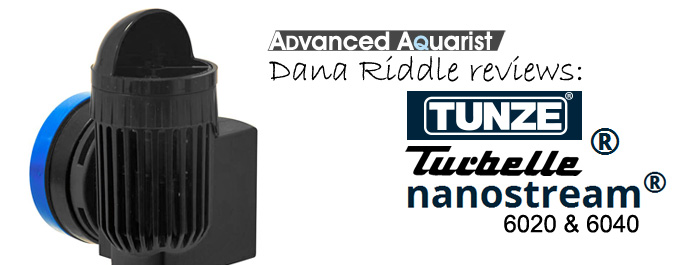
Tunze (pronounced Tune-zah) Aquarientechnik is a well-known German manufacturer of a number of aquarium products, including propeller pumps. This month we’ll review their Turbelle nanostream 6020 and 6040 pumps. These devices are rather unique in the respect that they use semi-hemispherical deflectors to direct flow from vertically-mounted motor/propeller assemblies. This feature allows the pumps to be compact in size making them suitable for smaller aquaria. I should note that the deflector is removable which allows a wider flow pattern. They differ in their controllability – the 6020 operates at a set speed (and hence a set output) while the 6040 utilizes a controller that allows a number of operational modes. Like most prop pumps nowadays, the submerged pump motor and propeller assembly is magnetically coupled to an external magnet. Transmission of vibration to the aquarium wall is reduced through use of 4 silicone dampeners and reportedly makes for a very quiet operation.
tunze advertises some impressive output flow for such small pumps (they are less than 17 cubic inches in volume.) Are the advertised flow outputs accurate? Are these pumps really quieter than those of tunze’s competitors?
Before presenting test results, let’s examine tunze’s advertised specifications:
Turbelle nanostream 6020
This pump operates at one pre-set speed only, and the US model operates on 115 volts at 60 hertz. tunze advertises its output to be approximately 660 US gallons per hour (or about 2,500 liters per hour) and recommends it for use in aquaria ranging in size from 10 to 65 US gallons (see comments in the Conclusions section below.) Power consumption is said to be 4 watts.
Other specifications are:
- Electrical cord length: 2 meters (78.7″)
- Pump Dimensions without flow deflector: 65mm (2.56″) x 60mm (2.36″) x 72mm (2.83″)
- Outlet: 40mm (1.57″)
- Silence Magnet Holder adequate up to a glass thickness of 12mm (1/2″)
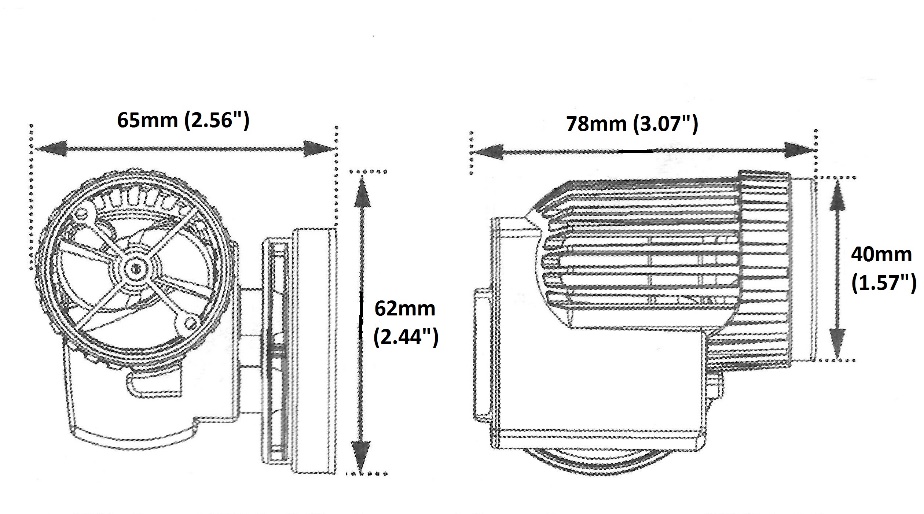
Figure 1. The 6020 nanostream is compact in size. The flow deflector will add about 1 inch (25mm) to the pump’s length.
Water Flow Output: Output (expressed as gallons per hour, or gph) of the 6020 was determined by measuring water velocity at the discharge and this information was plugged into the formula discussed in the ‘Testing Procedure’ below. The 6020 was found to generate water movement of 1.4 feet per second, which equates to about 510 gallons per hour.
Water Velocity: As mentioned, it is common practice to rate (and judge) pump performance by its output (gallons per hour.) In practice, this metric is of limited use – if corals were capable of caring, they couldn’t care less about ‘gallons per hour’. It is water velocity that matters. Without going into a lot of detail, water motion (velocity) allows for transfer of substances (such as oxygen, nutrients and trace elements) through a stagnant layer of water that surrounds allow submerged objects. This stagnant water is called the ‘boundary layer.’ The thickness of the boundary layer is inversely proportional to water velocity. If water velocity is low, and the boundary layer becomes too thick, a coral (or any sessile invertebrate) could be starved for dissolved substances necessary for health. Water velocity on a natural coral reef is usually 6 to 8 inches per second (0.5 to 0.67 feet per second or 0.34 – 0.45 miles per hour.) Velocity in spur and groove channels, shallow reef flats, or during storm conditions can be much higher.
Power Consumption: Testing revealed the 6020 pulled 4.5 – 4.6 watts and 0.04 amps at 121.5 volts.
Sound Level: Noise can be a major distraction from an otherwise magnificent aquarium, whether it’s from a slurping overflow, vibrating metal halide ballast, or vibration generated by a pump. tunze has a taken a rather unique approach in minimizing noise from their pumps. The pump assembly is attached to the internal magnetic coupler with silicon vibration dampeners.
Turbelle nanostream 6040
Visually, the nanostream 6040 appears very similar to the 6020. It is the about the same size, uses propeller technology, is magnetically coupled to an external magnet, and so on. But there are major differences. A rectifier converts 120-volt alternating current to 12-volt direct current which allows a controller to vary speed of the 6040’s pump and pulse flow duration (Note: tunze recommends the power supply assembly not be controlled by a third party timer.) It is possible to run the pump using a photovoltaic system (8-12v input.) A battery backup is also possible. In this case, tunze recommends a device called ‘Safety Connector” (part #6105.50; ~$55 US.) – it is an automatic transfer switch that switches from a 120v power source to a 12v battery.
These are the 6040’s specifications per tunze:
- For aquariums from 20 to 500 liters (5 to 132 US gallons)
- 200 to 4500 liters per hour (53 to 1,190 US gallons per hour) with Turbelle controller
- Power consumption: 1.5 – 13 watts
- Power supply unit: 100V/240V (50-60Hz)
- Cable length: 4.93 meters (194″); Rectifier to Controller (1.45m/~57″)
- Dimensions (without flow deflector): 65 x 65 x 65 mm (2.56 x 2.56 x 2.56 in.),
- Outlet diameter: 40mm (1.57 in.)
- Silence Magnet Holder up to a glass thickness of 15mm (~1/2″).
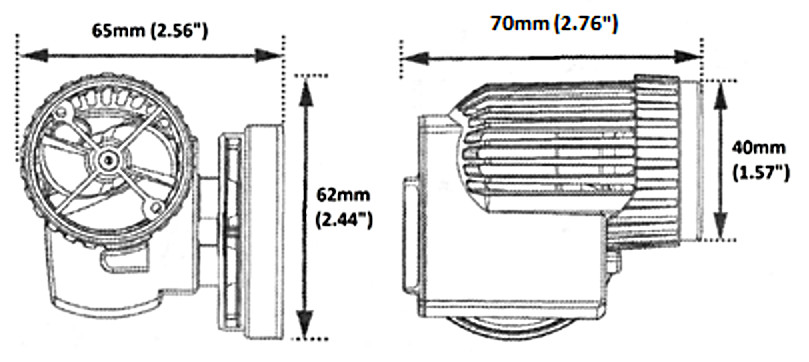
Figure 2. Although very similar to the 6020, the nanostream 6040 is slightly smaller. The flow deflector will add about 1 inch (25mm) to the pump’s length.
The 6040 Controller: Once a novelty, pumps controlled by a device with programmed features are becoming commonplace. The controller for the 6040 offers a variety of features. These options include variable speed (and hence increased water velocity and flow), pulse or oscillating flow (adjustable from 2 to 10 seconds, with an auto-adjust feature. Note: tunze recommends the pump shaft/impeller be in a vertical position with the flow deflector removed.) The ‘fish feeding’ mode shuts the pump down for 10 minutes, after which it re-starts automatically. There is quite a bit of other engineering within the controller. The pump will shut down if input voltage exceeds14v (a likely indication that the rectifier has failed. tunze cautions that input voltage exceeding 24v will destroy the controller.) The 6040 will shut down if it runs dry. A cradle is supplied for wall mounting the controller. See Figure 3.
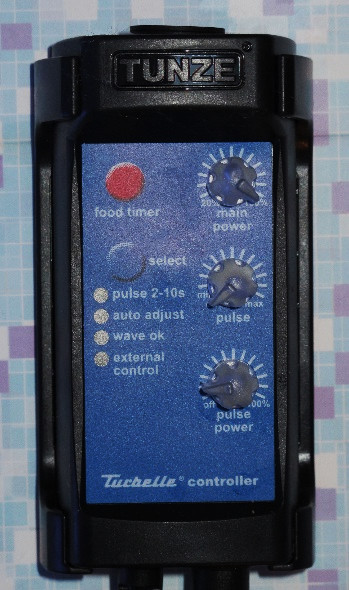
Figure 3. The 6040 nanostream pump controller. It is compact in size (55mm x 102mm or 2.17″ x 4.02″) yet offers numerous operational options.
Options: Moonlight simulation is possible when using a moonlight diode (#7097.050; about $35 US). This allows a simulated lunar cycle of 29 days going from new moon to full moon and back. The pump will then go into night-mode operation. The controller can be daisy-chained to a second controller and pump with optional cable (part #7092.300; ~$11 US) – this will allow pulses of increased flow simulating tidal changes or enhanced oscillating flow. A third controller/pump can be connected to the setup through use of a y-adapter (part #7090.300; ~$19 US.)
Water Flow Output: Figure 4 shows water velocity at various distances from the discharge of a 6040 pump at full speed.
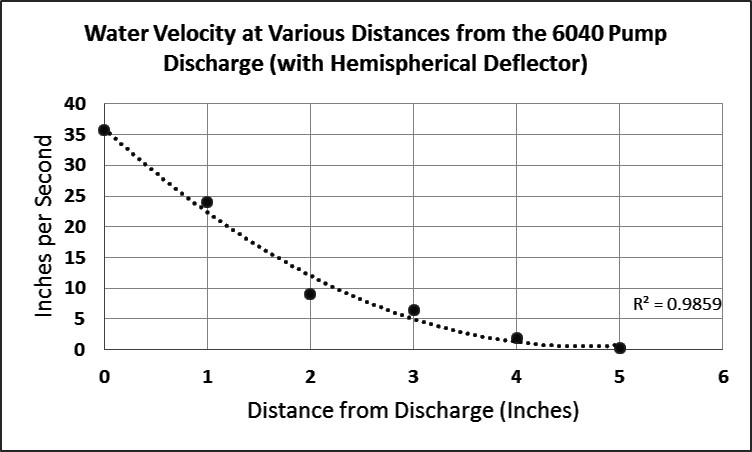
Figure 4. The discharge velocity of the 6040 is about 3 feet per second and will provide very good circulation in smaller tanks, and gentle flow in larger tanks (a 55-gallon was the largest tank used in testing.)
The 6040 as a ‘Wavemaker’: Using the 6040 as a wavemaker requires positioning the pump with discharge (without the deflector) pointing straight up and about 2 to 4 inches (5 to 10 cm) below the water surface. There is an ‘Auto Adjust’ feature that incrementally ramps the pump run time upwards. When a wave of sufficient size is generated through resonance frequency, the hobbyist can enter settings in the controller’s non-volatile memory by simply pressing a button.
Aquarium size definitely matters in this regard. One 6040 in a 55-gallon aquarium produced waves about 1 inch (25 mm) high, but did not produce a sweeping action to suspend particles on the bottom of the tank. In a 20-gallon tank, the device produced a wave approximately 3 inches high that was able to move negatively buoyant particles around on the bottom. See Figure 5. On the other hand, the pump produced waves that sloshed out of a 5.5-gallon tank and literally rocked a coral head weighing about 1 pound (454 g.)
Power Consumption: Power consumption is often an ignored long-term cost and should be considered before purchase of any aquarium electrical appliance. See Figure 6 for power consumption of the 6040 at various settings.
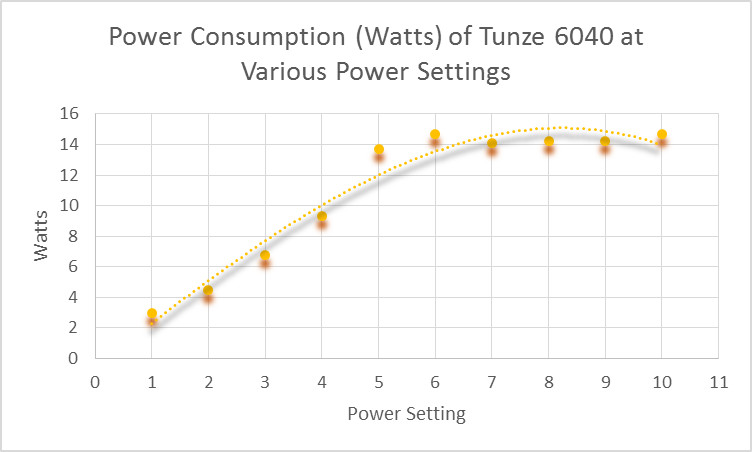
Figure 6. The output of the 6040 is at maximum when the setting is about ‘6’ even though settings continue up to 10.
Automatic Shut-off: The 6040 will automatically shut down if it runs dry or if the impeller rotation is blocked, and it will restart automatically 20 seconds after a correction is made. The pump also has a thermal overload.
Sound Level: Comments made about sound generated by the Turbelle nanostream 6020 (above) also apply to the nanostream 6040. While the pumps are very quiet (practically silent) in continuous run mode, there is some noise made by the pump itself when it is in the wavemaker mode. With this said, sounds of turbulent water will likely mask this sound. See Figures 7 and 8.
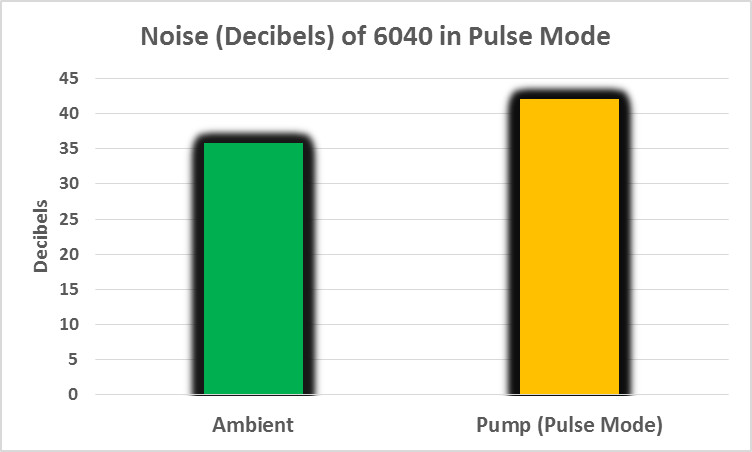
Figure 8. The sound of flowing water accounts for most of the decibels when the 6040 is in pulse mode.
Heat Transfer: Any electrical device will generate some heat, and these pumps are no exception. The question is then not of ‘if’, but to what degree these devices will transfer heat. As we know, high temperatures are an enemy of corals so heat transfer becomes a critical issue. A simple experiment was devised to test for heat – a 5.5-gallon (38 liter) aquarium was filled with water, a 6040 pump was installed and allowed to run at full speed for 48 hours. Temperature was then compared to water held in a 10-gallon aquarium. Figure 10 shows the results.
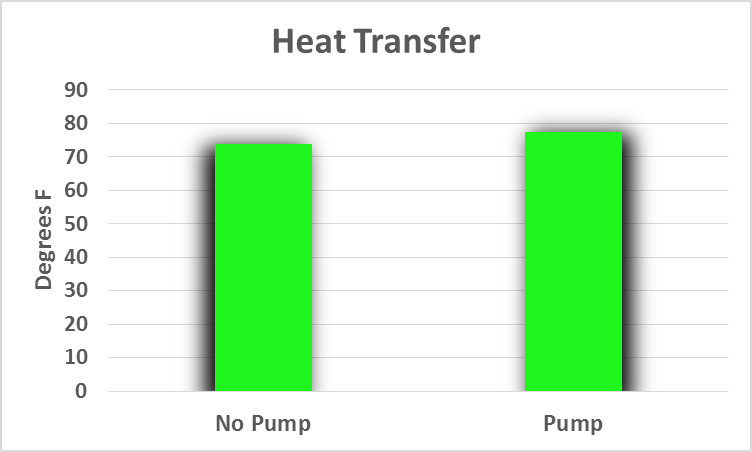
Figure 10. Even at full speed, the 6040 transferred little heat to the water of a 5.5-gallon aquarium.
Maintenance: tunze advertises the 6020 and 6040 to possess an undescribed ‘self-cleaning system’ but recommends a disassembly and thorough cleaning using a soft-bristle brush and soaking in vinegar to dissolve mineral buildups at two year intervals. It has been my experience that cleaning should be performed more often (every couple of months or so) when the device is used in hard water situations (such as African cichlid and reef aquaria.)
Warranty: tunze guarantees the unit to be free of defects in material or workmanship for a period of 24 months after the date of purchase. Water damage to the 6040’s controller is excluded.
Retail Price: The 6020 retails for about $40 US while the 6040 costs ~$140 US plus tax and shipping (if applicable.)
Customer Service: These pumps were broken in for a few weeks before testing, but before that began I disassembled them for a thorough cleaning. Upon assembly I discovered I had somehow lost misplaced a part. I contacted tunze USA for a replacement via email on a Sunday night, received a reply early Monday morning that the part was on its way. I give tunze an A+ for customer service.
Conclusions: Given the small size of these pumps, tunze has clearly produced them for smaller aquaria. I’ve seen excerpts of tunze’s cut sheet in retailers’ advertising that claims these pumps are suitable for tanks up to 130 gallons. This could well be the case if minimal water motion is required (such as a seahorse tank.) However, close examination reveals tunze recommends more than one of the 6040 pumps for larger aquaria (retailers – read the owner’s manual!)
Both pumps consumed slightly more power than advertised according to the testing device I used, if only by 1.7 watts.
Testing suggests the 6020 moved less water than advertised, but this might be due to the large size of the water motion sensor (its rounded shape is larger than the size of these pumps’ discharge. The Marsh-McBirney sensor is designed for testing streams and rivers where large scale water motion is fairly consistent.) In any case, the 6020 produced a discharge velocity of 1.4 feet per second, which equates to a respectable 510 US gallons per hour.
In the opinion of the author, tunze has done a disservice to itself when rating the 6040 by only its water movement (gallons per hour.) While moving 1,080 US gallons per hour is impressive, it is this pumps ability to produce waves through resonance that is important. While testing, this pump was found to produce waves capable of moving a coral about the size of a 16-ounce water bottle. See a close up photo of this coral’s polyp expansion in Figure 11.
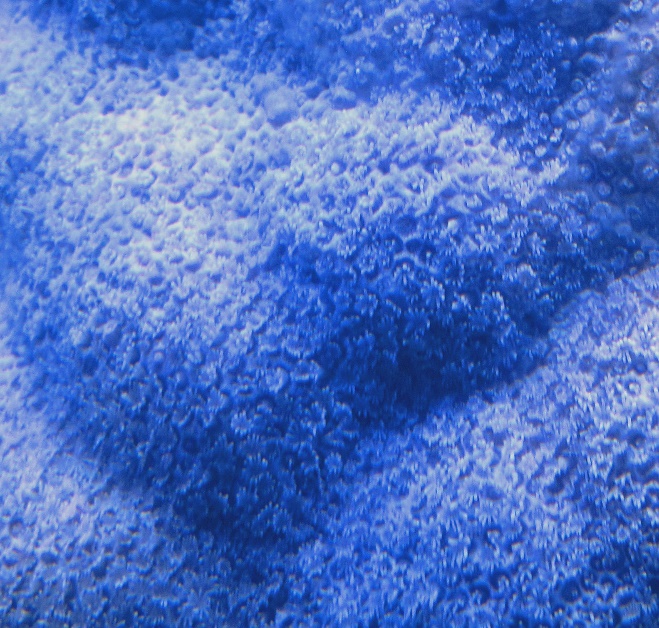
Figure 11. The proof is in the pudding. This Porites SPS coral demonstrates excellent polyp expansion in pulsed flow generated by the 6040. Many corals will not expand their polyps if water motion is too low.
Thoughtful engineering is apparent through both pumps. From the noise/vibration dampening of the silicon isolators to the option-packed 6040 controller, tunze continues its tradition of quality in design. To my knowledge, these pumps’ vertical drive shaft/propeller combined with a flow deflector is unique. This combination makes for a small footprint which is ideal in smaller sized aquaria and allows the pump to be partially (or perhaps fully) hidden behind rockwork. The ability to direct the water flow with the deflector is an interesting concept. The small size of the 6020 and 6040 might allow just one more coral to be placed in a nano-reef.
A word of caution – the coupling magnets supplied with both pumps are quite strong and could easily pinch the fingers of a careless hobbyist.
In closing, I purchased these pumps for use in small aquaria used in experiments for my 2016 MACNA project. They have met my expectations, and exceeded them in a couple of respects.
And last, but not least, when I needed some assistance, tunze USA responded in a timely manner.
Ratings: Both pumps have similar ratings (as marked on the pumps themselves.) These include:
‘IP68’ Perhaps an explanation is in order: ‘IP’ stands for ‘ingress protection’, while 6 = Totally dust tight, and 8 = Protected against prolonged effects of immersion under pressure. tunze states these pumps are rated for that pressure seen at a depth of 1 meter of water.
‘RoHS’: tunze has obtained the Restriction of Hazardous Substances certification (RoHS – sometimes called the ‘lead rule’ but also restricts products’ content of lead, chromium, etc.), as well as the European ‘CE’ mark.
Maximum Temperature Rating: tunze states these pumps are good to go at temperatures up to 95ºF (35ºC.)
Testing Procedure: For measuring flow at various distances, these devices were installed in a 55-gallon aquarium (48″x19.5″x 13.5″; 122 x 49.5 x 34cm) filled with freshwater. Testing of pulse mode was performed variously in 5.5-gallon, 20-gallon, and 55-gallon aquaria.
Water velocity was measured with a FloMate 2000 electronic water velocity meter (Marsh-McBirney, Frederick, Maryland, USA). The sensor was located about 1/16″ away from the central point of the pump discharge with the deflection hood removed. To arrive at gallon per hour figure, velocity measurements were plugged into this formula:
- Flow (Gallons per Hour) = Velocity (inches per second x 60 (seconds/minute) x 60 (minutes/hour) x Discharge Area (in square inches) / 231 (cubic inches per gallon)
- Discharge Area = r2, where = 3.14, and r = radius
Power consumption was determined through use of a Kill-A-Watt electrical monitor (P3 International.)
Noise, as decibels, was measured with a Spier Scientific Sound Level Pen, model #840018.
Conflict of Interest: These pumps were purchased through normal retail channels.


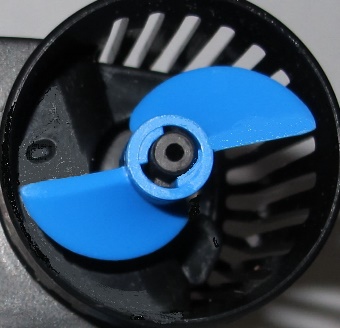
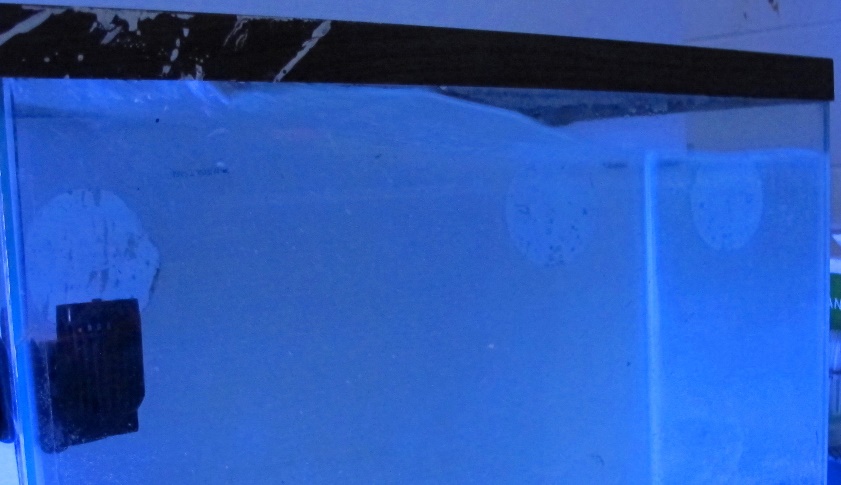
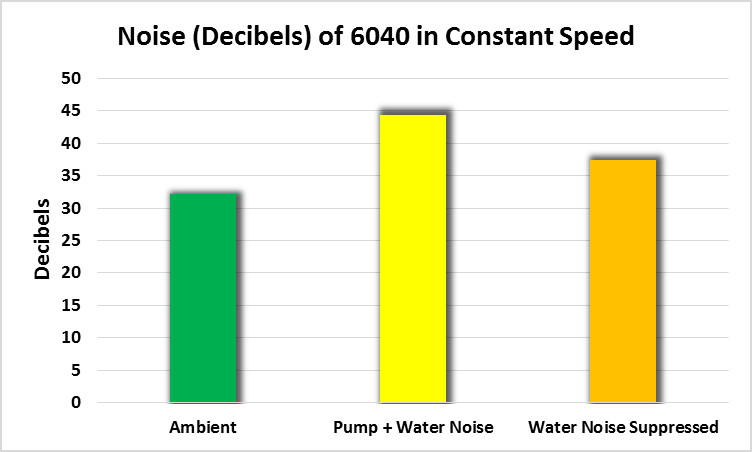
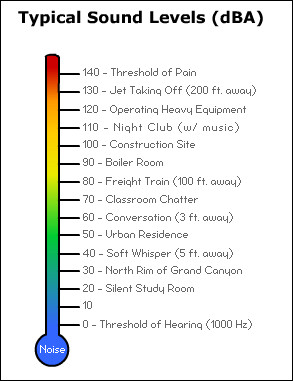

0 Comments